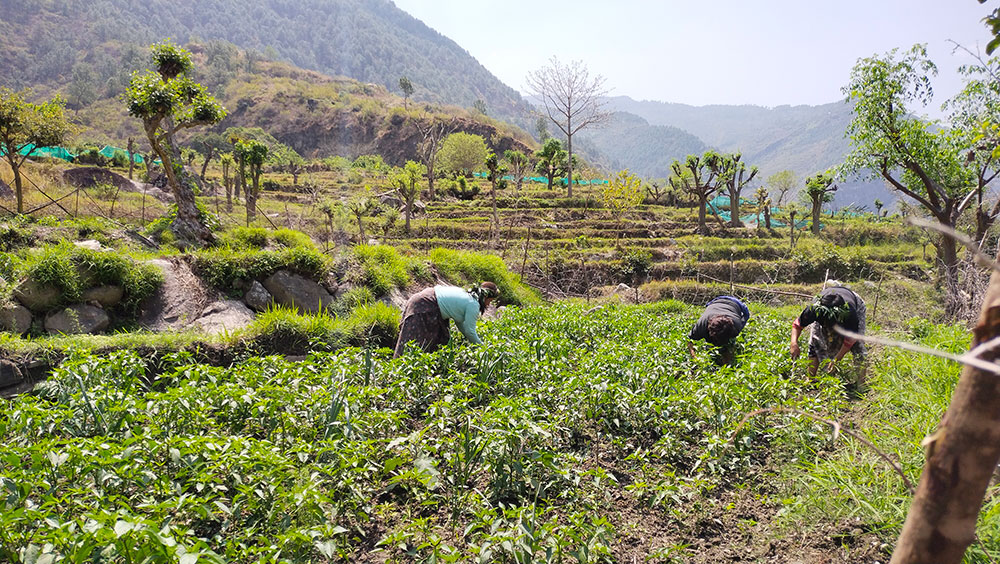Neten Dorji
Trashiyangtse: The first harvest of Bhutanese green chilies to hit the market this year may be on short supply as yield was comparatively low owing to erratic weather, pest and diseases, according to farmers of Yalang and Ramjar gewogs in Trashiyangtse.
Otherwise, by this time of the year, farmers of Yalang and Ramjar gewog in Trashiyangtse could be happier as the farmers of the first green chillies to hit the market in the country they earned between Nu 100,000 and 150,000 annually.
By contrast, this year the chilli plants were dying, rotting, and wilting.
“Once chilli plants dry from top, they do not bear fruits. I am uprooting the infected plants,” Yangchen Lhamo said.
As a result, she was not expecting to earn more than Nu 5,000 this year. Farmers also blamed the change in weather pattern and climate.
“Due to change in weather pattern, and untimely rainfall the chilli cultivation is affected,” said Ugyen Tenzin, a farmer in Phuyang. “Cultivating chilli is becoming a waste of resources and time.”
In fact, the farmers of Yalang village did not cultivate chilli this year due to extreme heat and moisture at Bayphushot.
“The production of chilli is decreasing because of the chilli blight and other disease,” said Jigme Choden. “Although we used preventive measures such as mulching plastic, chillies rot from the roots. We suspect it could be affected by high humidity caused by erratic rainfall.”
The farmers also believe the climate and soil no longer favour chilli farming. “Erratic weather such as heavy and short rainfall and insects damage the crops,” said Jigme Choden.
As a result, when it was time for the plants to bear fruits, it started to wilt and dye. “I do not remember the chilli drying like this in the past.”
Today, more than 40 households from Yalang gewog were involved in cultivating chilli. They said the income from the sale of chilli enabled them to send their children to school and improve their living standards.
Yalang gewog agriculture extension officer, Dorji Lhendrup, said waterlogging in the area and lack of management practices caused the chilli plants to die.
“Besides climate change, I suspect chilli blight and continuous cultivation of chilli in the same area were the causes of the plants dying,” he said. “We distribute mulching plastic for people to keep pests and excess moisture away.”
He said that compared to the past, the chilli yield from the area had decreased.
Meanwhile, the people of Yalang and Ramjar cultivate chilli twice a year, earning between Nu 100,000 and 150,000. Some even earned Nu 200,000.


